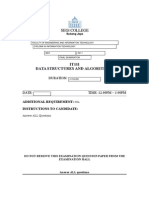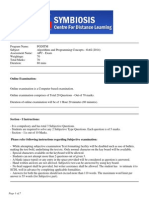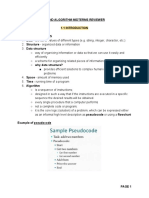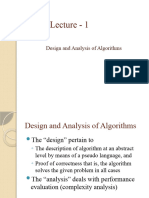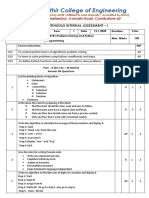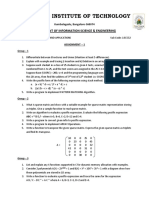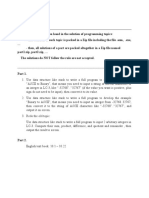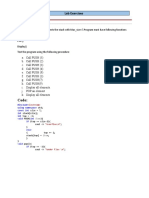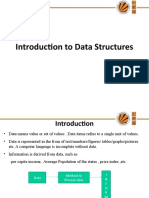0% found this document useful (0 votes)
95 views13 pagesMG SoftwareDevelopment L4 AlgorithmFundametals
The document outlines the TVET National Comprehensive Assessment for the ICT sector, focusing on Software Development at RTQF Level 4 for the school year 2020-2021. It includes various questions covering algorithm fundamentals, data structures, and programming concepts, with specific instructions for candidates on how to attempt the assessment. The assessment is divided into three sections with a total of 100 marks, emphasizing definitions, operations, algorithms, flowcharts, and characteristics of algorithms.
Uploaded by
hiti protogeneCopyright
© © All Rights Reserved
We take content rights seriously. If you suspect this is your content, claim it here.
Available Formats
Download as DOCX, PDF, TXT or read online on Scribd
0% found this document useful (0 votes)
95 views13 pagesMG SoftwareDevelopment L4 AlgorithmFundametals
The document outlines the TVET National Comprehensive Assessment for the ICT sector, focusing on Software Development at RTQF Level 4 for the school year 2020-2021. It includes various questions covering algorithm fundamentals, data structures, and programming concepts, with specific instructions for candidates on how to attempt the assessment. The assessment is divided into three sections with a total of 100 marks, emphasizing definitions, operations, algorithms, flowcharts, and characteristics of algorithms.
Uploaded by
hiti protogeneCopyright
© © All Rights Reserved
We take content rights seriously. If you suspect this is your content, claim it here.
Available Formats
Download as DOCX, PDF, TXT or read online on Scribd
/ 13
























